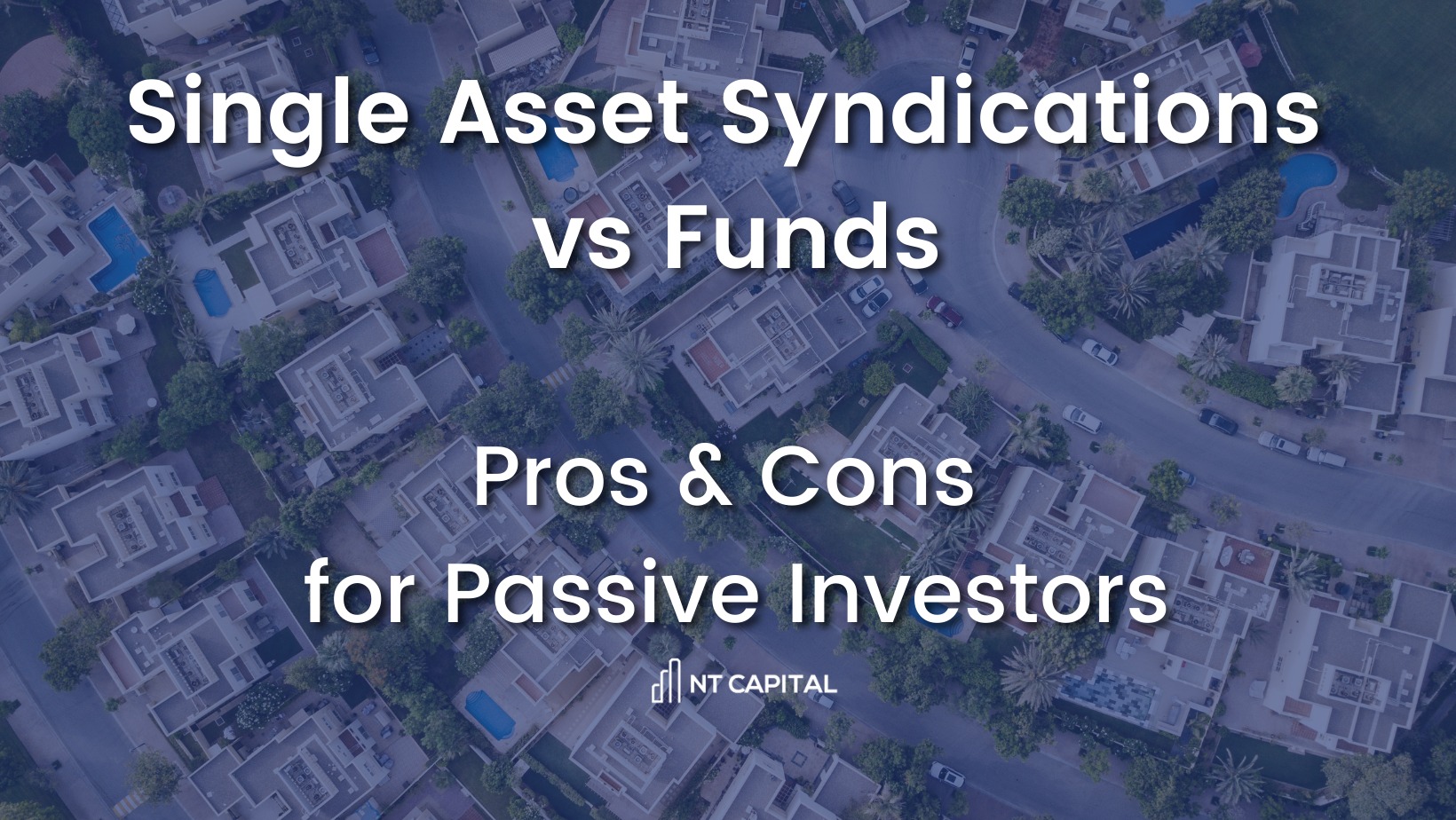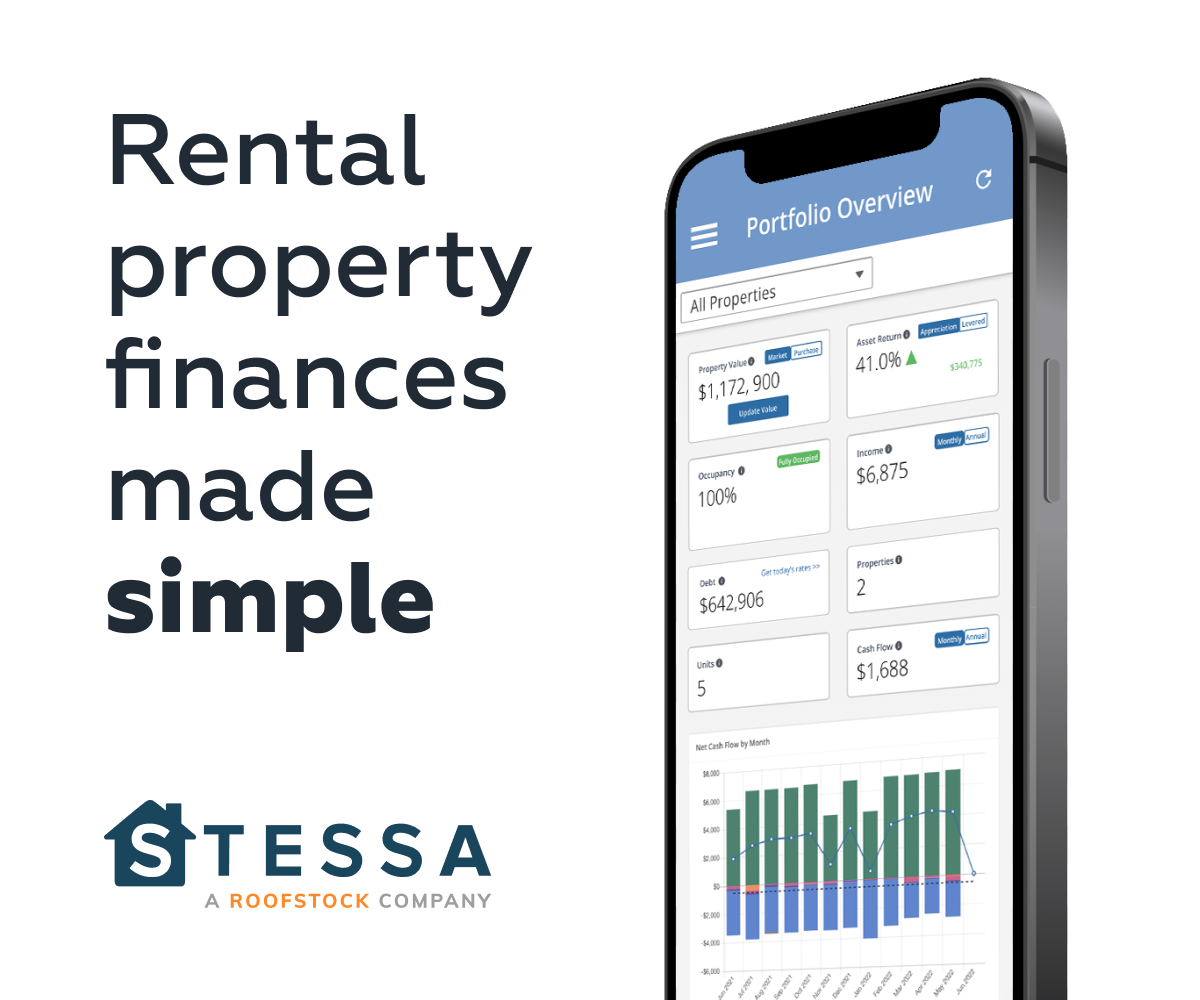
Single Asset Syndications vs Funds for Passive Investors
Passive Real Estate Syndication investors will typically be presented with two types of investment options: Single Asset Syndications and Funds. In this blog post we’ll identify some key pros and cons passive investors should consider when comparing single asset and fund investments.
“Single Asset” is a bit of a misnomer, because this type of syndication can sometimes acquire more than one asset. For example, the first Single Asset Syndication I invested in actually acquired two apartment complexes in a single transaction. The important distinction is that we made one investment into a single, closed end business that had already identified the asset(s) being purchased.
Funds are more open-ended and will typically not have identified which specific assets will be acquired. Fund sponsors define investment criteria, begin raising funds, then go to market searching for properties while continually raising capital from investors.
Single Asset Syndications
Pros
Asset Selection
You pick exactly which assets you’re investing in with a Single Asset syndication. By the time the capital raiser approaches you with an opportunity, they’ll likely already have the property under contract with a business plan prepared. You should know exactly what you’re investing in.
Now, “single asset” is a bit of a misnomer in this case because this type of a syndication can acquire more than one asset. The acquisitions, however, are all done at once as a single business plan and a closed end investment.
Pick what you invest in, get the performance of one asset, know when capital is being deployed
No Cash Drag
Funds will typically require a commitment from passive investors but the fund sponsor may only call a portion of the funds at any given time. If a passive investor commits $200k to a fund, the sponsor may only call $100k right off the bat for the fund’s first acquisition. The passive investor will need to keep the remaining committed capital availalbe. Many investors keep those funds in a cash account, which is not an appealing prospect with record low interest rates and high inflation.
Cons
Concentration of Risk
A single asset syndication puts all of your investment into one business plan. If the syndicator didn’t do adequate due diligence, had an insufficient Capital Expenditure budget, failed to adequately manage the Property Manager, or some other risk factor goes wrong, the investment is fully exposed.
Proper portfolio allocation should not put too much weight into any one investment or syndication, so even though a single asset syndication concentrates risk, any one syndication should not represent an outsized portion of your overall investments.
Urgent Timeframes
Deals may be open for funding for a period of 30-60 days. If you see a deal you like, you may not be ready to invest by the time the deal is closed for unrelated factors. Some investors choose to keep ‘dry powder’ (cash) as a large portion of their portfolios, others prefer highly liquid publicly traded securities. Whichever route you choose to go, expect your Single Asset syndications to have short funding deadlines.
Funds
Pros
Diversification
Funds will typically acquire a number of properties in multiple markets over an extended length of time, diversifying investors’ capital. The underperformance of a single property can be made up for by the performance of other properties. Investors seeking exposure to 5 properties, for example, can more easily achieve diversification through funds, as compared to single asset syndications.
If you invest in 123 Main Street, your investment’s performance is totally dependent on the performance of 123 Main Street. But, if you invest in a fund that buys 123 Main Street, 456 First Avenue, 321 Broad St (etc), and 456 First Avenue doesn’t meet performance expectations, the performance of other assets may make up for that underperformance. But they also may not! The other assets could also underperform. You diversify among assets, but in this case you might not diversify among operators.
Less Urgent Timelines
Single asset syndications will typically have short timeframes for passive investors to commit and send funds. Funds are a different situation entirely. Many funds are open (accepting new investors) for the better part of a year, meaning investors have more time to review the documentation, make funds available, and fund their investment.
Cons
Taxes can be complicated
Investing in syndications, whether single asset or funds, should drive most passive investors to use a qualified CPA to prepare their taxes. Both types of investments are complex enough to warrant professional advice and tax prep. Funds, however, can add an extra layer of complexity over single asset syndications because funds can result in tax liability for investors in multiple states. Be sure to seek professional guidance for your specific tax situation.
Cash Drag
Fund investors will typically commit a certain amount of capital, but the fund’s sponsor may initially only call or utilize a portion of the investment commitment. Investors may need to keep the remaining funds accessible for when they are ultimately called. Many investors will choose to keep those funds in cash, receiving effectively negative returns due to low interest rates and high inflation.
This does depend on the fund’s structure and strategy. The sponsor may choose to hold committed funds in cash, waiting for the next acquisition. Funds in hand can give sponsors a better negotiating position with sellers, but on the flipside the money could tempt sponsors to loosen their guidelines.
Exposure to Underperformers
Most Pros have corresponding counterpoints. As mentioned above, funds provide diversification across multiple assets and markets. The counterpoint to diversifying across multiple assets’ performance is that overall investment performance can be hindered by any underperforming properties.
The Most Important Takeaway
Funds and Single Asset syndications both have one major underlying risk factor – the sponsor. The team that analyzes, selects, and executes the business plan must know what they’re doing and behave in an ethical manner with investor funds.
Good and bad sponsors alike may do single asset syndications or funds. Don’t assume that just because they’re doing one type or the other that they’re experienced, responsible stewards of investor funds.






